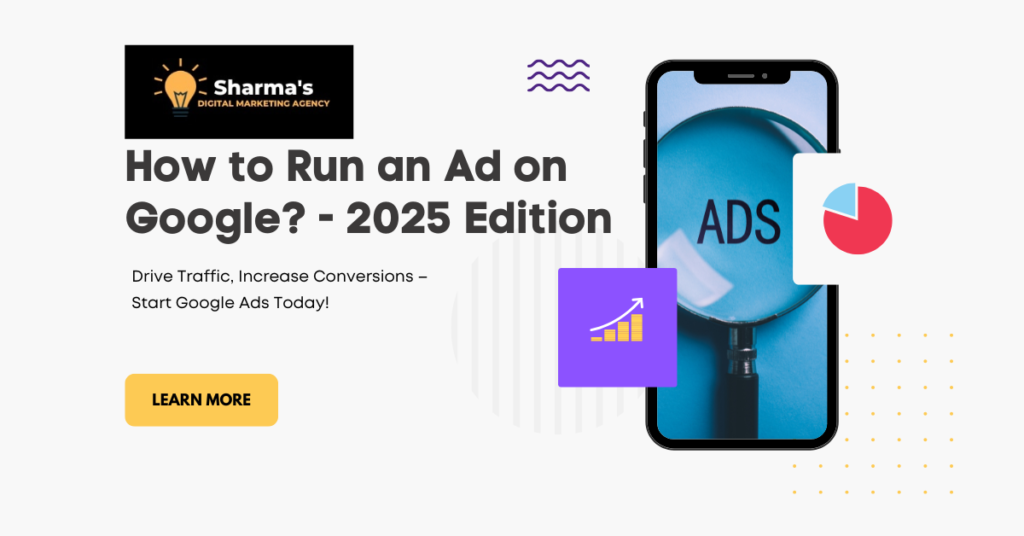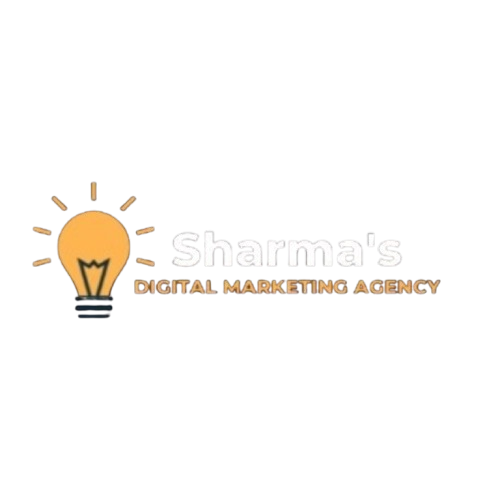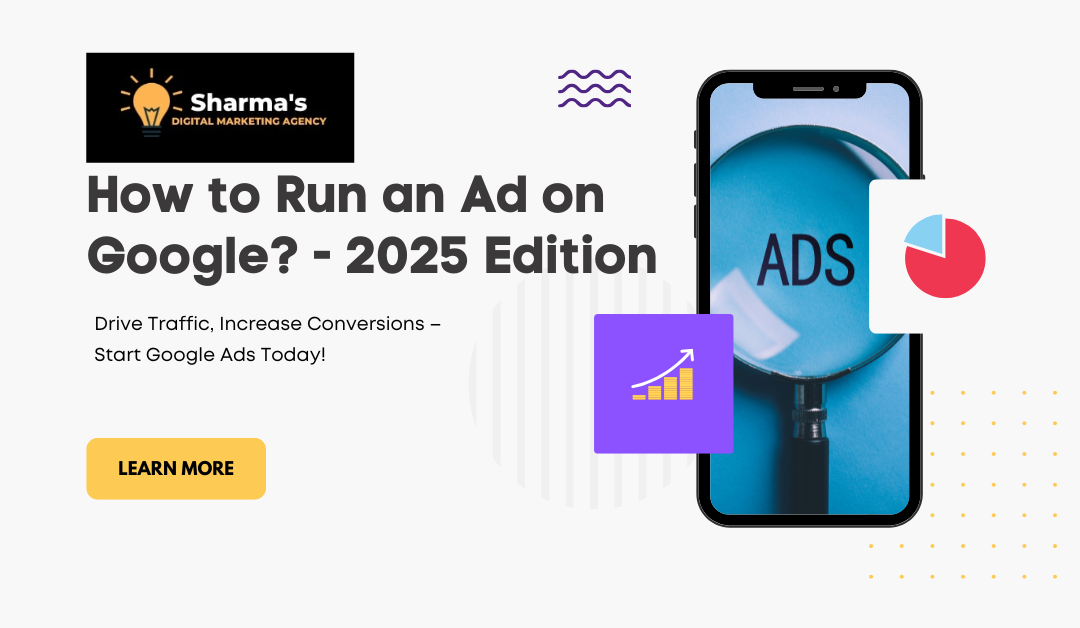How to Run an Ad on Google? – 2025 Edition
In today’s digital age, almost everyone is online. Businesses worldwide aim to expand their reach on the internet, and Google Ads is one of the most effective ways to achieve this. How to Run an Ad on Google? We will help you. Read carefully. Also known as PPC (Pay-per-click), Google Ads allows businesses to connect with their target audience efficiently. This article provides a step-by-step guide to running an ad on Google in 2025.

What is Google Ads? How to Run an Ad on Google
Google Ads, also known as Pay Per Click (PPC), is an advertising platform by Google. It allows advertisers to display their ads on Google search results and other partner websites. Advertisers only pay when someone clicks on their ad, making it cost-effective and results-driven.
Google is the most popular search engine globally, holding over 75% of global search traffic. By leveraging Google Ads, businesses can target people actively searching for their products or services. Let’s dive into the process of setting up and running an ad.
How To Create a Google Ads Account?
Creating a Google Ads account is the first step. Here’s how to do it:
- Go to Google Ads Website: Open your browser and navigate to ads.google.com.
- Sign In: Use your Gmail account to sign in. If you don’t have a Gmail account, create one first.
- Create an Account: Google will prompt you to create a new account. Follow the steps to set up your Google Ads account.
- Set Up Your Billing Details: Fill in the billing details required to activate your account. Without this, you cannot run ads.
Once your account is ready, you can start creating campaigns.
Understanding Google Ads Campaign Types
Before running an ad, it’s essential to understand the different campaign types Google Ads offers:
1. Search Campaigns
These ads appear on Google’s search engine results pages (SERPs) when someone searches for keywords related to your business.
2. Display Campaigns
Display ads appear on Google’s partner websites, helping you reach a broader audience visually.
3. Shopping Campaigns
If you sell products online, shopping campaigns showcase your products directly on Google search results.
4. Video Campaigns
Video ads run on YouTube and other Google video partner sites.
5. App Campaigns
These are designed to promote your mobile app across various Google platforms.
Each campaign type serves a specific purpose. Choose one based on your business goals.
How To Run a Google Ads Campaign?
Here’s a step-by-step guide to running a Google Ads campaign:
Step 1: Define Your Goal
What do you want to achieve? Increased website traffic, more leads, or higher sales? Clearly define your goal to structure your campaign effectively.
Step 2: Choose Your Campaign Type
Based on your objective, select the appropriate campaign type (Search, Display, Video, etc.).
Step 3: Set Your Budget
Decide how much you’re willing to spend daily or monthly. Google provides suggestions based on your campaign type.
Step 4: Select Your Target Audience
Google Ads allows precise targeting. Define your audience by:
- Location: Choose specific countries, cities, or even a radius around your business.
- Demographics: Target users by age, gender, and household income.
- Interests: Reach people based on their online behavior.
Step 5: Perform Keyword Research
Use Google’s Keyword Planner to find relevant keywords. Focus on keywords with high search volume and low competition.
Step 6: Write Compelling Ad Copy
Your ad copy should:
- Include your primary keyword.
- Highlight benefits and unique selling points (USPs).
- Include a clear call-to-action (CTA) like “Buy Now” or “Learn More.”
Step 7: Set Up Ad Extensions
Ad extensions add extra information to your ads, such as:
- Sitelinks: Links to specific pages on your website.
- Call Extensions: Display your business phone number.
- Location Extensions: Show your business address.
Step 8: Review and Launch
Double-check your campaign settings, ensure everything aligns with your goals, and click “Publish.”
Tips for Running a Successful Google Ad Campaign
1. Monitor Your Campaign
Regularly check your campaign performance using Google Ads analytics. Adjust bids, keywords, or targeting if necessary.
2. Optimize Landing Pages
Your landing page should match the intent of your ad. Ensure it’s user-friendly and has a clear CTA.
3. Use Negative Keywords
Exclude irrelevant search terms using negative keywords to improve ad relevance and ROI.
4. Test Ad Variations
Run multiple versions of your ad to see which performs best.
5. Focus on Quality Score
Google assigns a Quality Score to your ads based on relevance, landing page experience, and click-through rate (CTR). Higher scores lead to better ad placements and lower costs.
Common Mistakes to Avoid
- Ignoring Analytics: Regular analysis helps you optimize your campaigns.
- Overlooking Mobile Users: Ensure your ads and landing pages are mobile-friendly.
- Not Using A/B Testing: Always test different ad elements.
- Setting Unrealistic Budgets: Balance cost with expected ROI.
Conclusion
Running an ad on Google might seem complex, but with the right approach, it’s an incredibly powerful tool to grow your business. From creating an account to optimizing campaigns, each step is crucial for success. Start small, track results, and refine your strategy to achieve the best outcomes.
FAQs
1. How much does it cost to run a Google Ad?
Google Ads operates on a pay-per-click model. Costs depend on your budget, competition, and keywords, ranging from a few cents to several dollars per click.
2. Can I run Google Ads without a website?
Yes, you can run local ads or use Google’s business profile to direct traffic without a dedicated website.
3. How long does it take to see results from Google Ads?
Results can be immediate, but it’s recommended to run campaigns for at least a month to gather sufficient data.
4. What is a good CTR for Google Ads?
A CTR (Click-Through Rate) of 2-5% is considered good, but this varies by industry.
5. Are Google Ads better than Facebook Ads?
Both have their strengths. Google Ads target active searchers, while Facebook Ads focus on audience interests. Choose based on your business goals.

